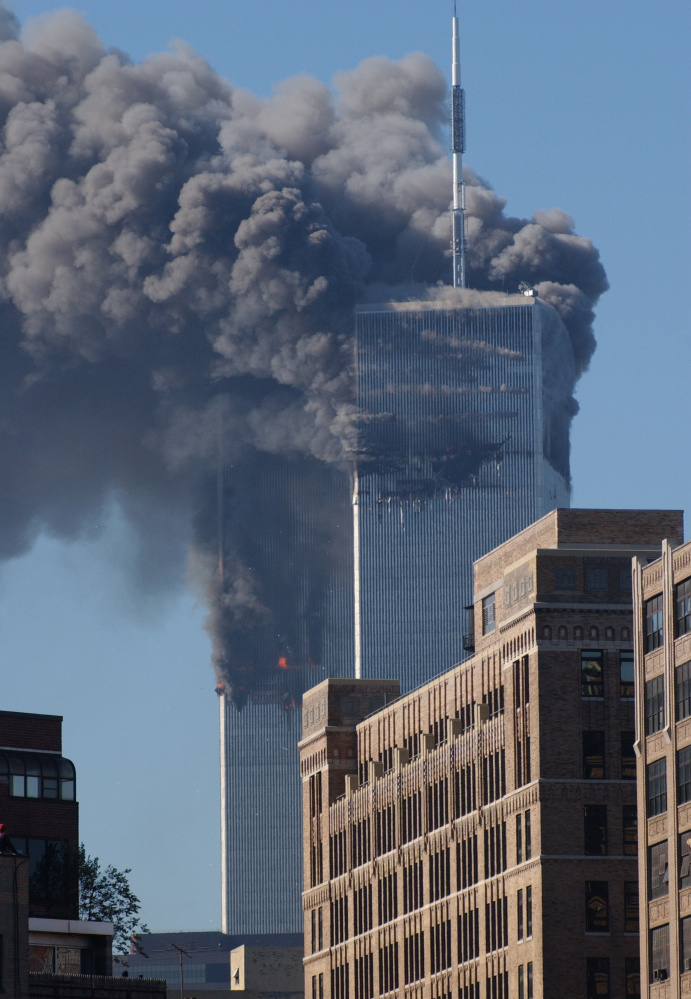CAPE ELIZABETH — Fifteen years later, the question is posed: “Are we safer today than we were on 9/11?”
The answer: yes and no.
As a senior aide to Transportation Secretary Norman Y. Mineta on that day, I had a front-row seat. DOT Chief of Staff John Flaherty and I had been standing outside the secretary’s conference room, watching the news and waiting for him to conclude his meeting with Jane Garvey, head of the Federal Aviation Administration, and the visiting Belgian transport minister.
Slowly, agonizingly, it became clear that the World Trade Center had been hit by a commercial airliner, not a private plane, as we first assumed. Not long after, as we watched in horror, the second airliner slammed into the towers.
Seconds later, we broke up his meeting, Garvey raced across town to orchestrate the FAA response, and our world changed forever.
Since the attackers had used the transportation sector as their weapon, Mineta was rushed to the underground White House emergency operations center to join Vice President Dick Cheney and other national leaders desperately mounting an appropriate response.
Later, yet another airliner slammed into the Pentagon. (My wife, Sandy, was driving by the building at the moment it hit.) At DOT headquarters, we could see the smoke rising across the Potomac. Finally, the fourth plane hit the ground near Shanksville, Pennsylvania, after a heroic effort by passengers to regain control from the terrorists.
Federal officials are trained in “continuity of government” and crisis-response drills, but it’s a different ballgame entirely when it’s actually happening outside your window, and your friends and family members are at real risk. This is not a drill.
And no one knew what was coming next.
Suddenly the hallways outside the transportation secretary’s office were occupied by men and women wearing tactical clothing and sidearms. It turns out that staff of the DOT Inspector General’s Office also hold federal law enforcement status, and they took up defensive positions at key locations in our building as developments unfolded.
Some security guy quietly left a gas mask underneath my desk.
At the White House, they monitored the rogue flights and coordinated jet fighter response with the Department of Defense.
Transportation Secretary Mineta and the FAA, for the first time in history, shut down the entire airspace above the United States. By midday the skies were empty, and they would stay that way for days.
It’s hard to describe how you feel in these situations. “A gas mask? What the hell am I supposed to do with a gas mask?”
The phones are in meltdown from global media calls. People are asking questions for which there are no answers. The phrase “the whole world is watching” takes on new meaning. The whole world was watching.
In the aftermath of those horrible first days, DOT officials, the White House and Congress set about feverishly building a new defensive system, designing the Transportation Security Administration, buying passenger and luggage screening machines as fast as they could be built, beefing up the Federal Air Marshal Service, ordering airlines to fortify the cockpit doors of every airliner.
It was all done in a spirit of patriotism and urgency. The security changes are still in place, and they’ve unquestionably made the system safer.
But what about that sense of patriotism?
I recall meeting some of the first airport screeners we hired at the TSA. They would invariably speak of their dedication to the protection of our country, the honor and duty they felt by personally responding to 9/11.
The screener I spoke with most recently said he’d joined for the health insurance. There’s nothing wrong with that, but it illustrates a different national perspective 15 years after 9/11.
And it’s not only the TSA. Police executives across Maine are having a hard time filling positions. There’s a teacher shortage. Volunteer fire companies are shorthanded. The Army, Navy and Air Force all are dealing with recruitment shortages. Public service just isn’t a priority for recent job-seekers.
I am often asked to identify the greatest threat facing us today. The daily threat is dynamic, depending upon several variables.
But the ongoing threat is our own complacency. In schools, what’s left of churches, in our entertainment and news media, we must restore a sense of public service as an honorable duty worthy of our best and brightest. Until we do, we are all less safe.
Send questions/comments to the editors.



Comments are no longer available on this story